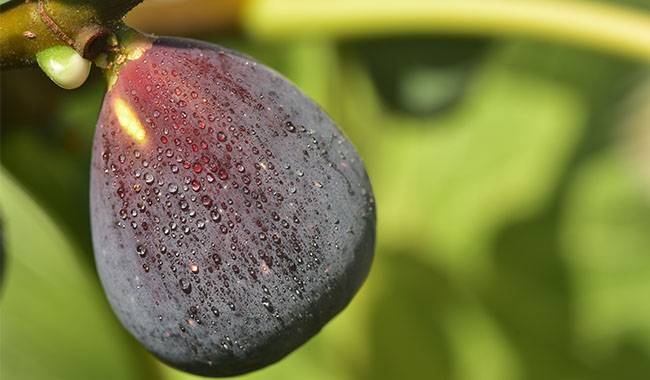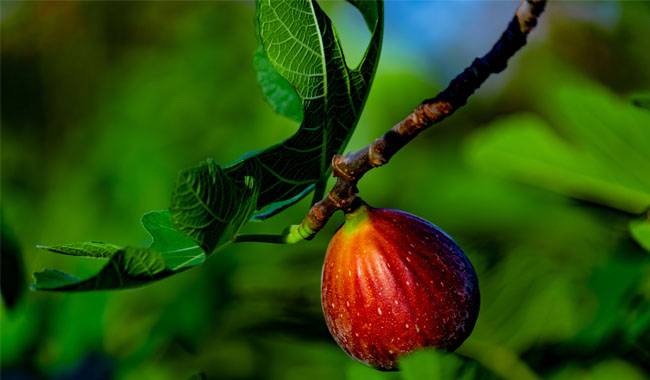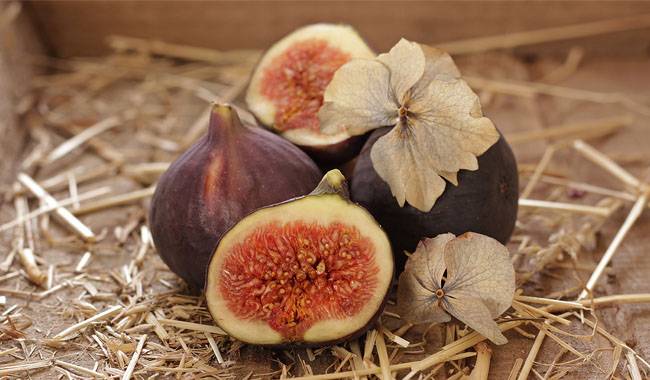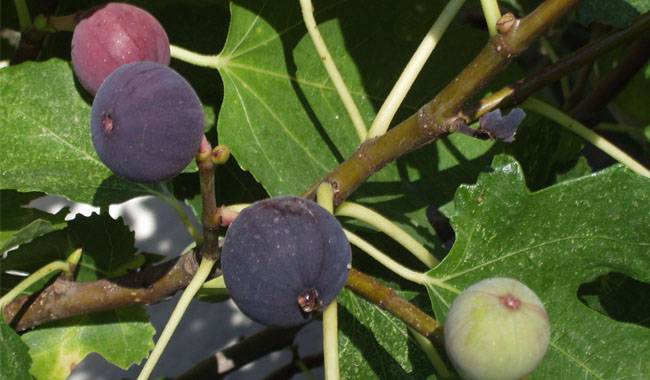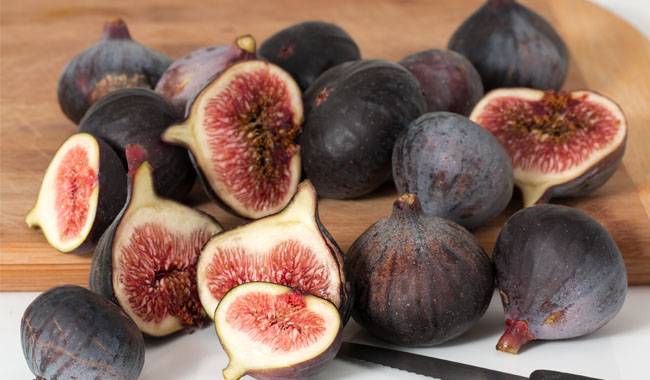
What are figs? It would be “a powerful nature full of miracles! One of these miracles is the active coexistence, or more precisely, the community of plants and animals necessary for each other.
Many people seem to like the cakes made of dried figs. Its fresh fruit, which floods our markets in the south in late summer and fall, is also very tasty and nutritious.
However, for others, they seem too sweet, but as they say, it’s just a matter of taste.
Fig is a small to medium-sized tree with an open crown and light gray bark. It is found in the wild or wild state in the Transcaucasus, Crimea, and Central Asia. It has large, densely pubescent leaves on its abaxial surface, both complete and cut into leaves on the same tree.
Fig inflorescences are unique. Their unusual appearance prevented even Karl Linnaeus, the ancestor of the modern system of botany, from immediately uncovering their secrets.
The inflorescence resembles the fruit of fig, also known as a fig, which is pear-shaped and has a hole in the flat top.
Upon arriving at the Sukhumi Botanical Garden, botanist Managadze took me to two trees that I couldn’t see clearly and asked me to guess which one of them was male and which was female.
No matter how hard I tried to figure out the difference between the purple shades of the figs, I was unsuccessful. Then my companion picked fruit from each plant.
Eating one of them with interest, I felt the taste of it, and after taking a bite, I was convinced that the fruit was like a bag filled with sweet, juicy jam, pulp.
At the first touch, the second fig had the same appearance and turned out to be flabby and hollow. Finger indentations remain on her soft skin.
Once the skin is slightly torn, the tiny insects tightly wrapped in the skin are freed from the disturbed hive of the colony. Only after such a visual lesson did Managadze tell me the riddle of the figs.
The male tree proved to be the fig of figs and the female the juicy edible fruit. It turns out that this cunning riddle was solved back in ancient times, but its main essence was later discovered.
In some trees, pollination is carried out by the wind, while in others it consists of huge insects, and the fertilization of figs can only be accomplished with the help of tiny black wasps (oocytes), which transfer pollen from male to female trees. Moreover, this wasp cannot reproduce without the help of figs.
The mechanism of this coexistence is very complex. Figs form three kinds of inflorescences. One of them develops at the end of September and the eggs and larvae of the oocyte overwinter.
In the spring, their new generation is born here for feeding and mating. Subsequently, the female, her body sprinkled with pollen, begins to search for a place to lay her eggs and tries to reproduce in the second inflorescence, which produces the fig fruit.
However, these inflorescences are designed so that the wasps cannot lay their eggs in them. As the wasp swarms through the inflorescences, it manages to pollinate the female flowers, but it only lays eggs in the third type of inflorescence, which is specifically designed by nature for this purpose.
In early autumn from these inflorescences emerge a new generation of females who lay eggs again, and these eggs hibernate in the ovary until spring.
Thus, in the pear-shaped inflorescences of figs, his faithful allies, phages always find the weak points of figs and protect them.
They live, feed, reproduce, protect the offspring from bad weather, and, thanks to this care, sincerely pollinate the flowers.
Botanists call the process of pollination of flowers by phagocytosis of mother cells.
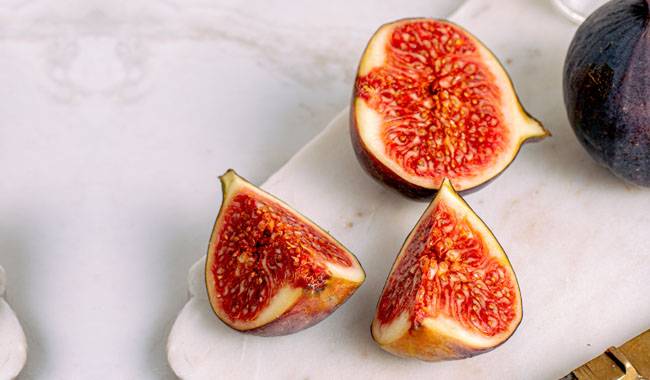
In the Caucasus and Crimea, you can hear several versions of the legend about how a businessman decided to get rich from figs. This is one of them.
Seeing a great demand for figs, he bought a large fig orchard. At the peak of the fruit harvest, a wily, jealous neighbor came along.
“Why do you keep these useless trees in your garden? he asked the merchant, pointing to the barren fig head: “I cut down the useless trees long ago and planted the good stuff.”
The visitor went away, and the merchant grabbed an ax and cut down the “useless” trees.
Winter had passed, spring had passed, the time of harvest had come, but there were no figs to collect. The fruits that appeared in spring withered and fell.
The same story was repeated in the following years until the ruined and foolish merchants angrily cut down the whole garden.
However, scientists also got into trouble with figs. After Linnaeus, the botanist Casparrini, famous for his new “discovery”, divided a fig into two kinds: he attributed male specimens to one of them and female specimens to the second. The unfortunate botanist thought that he quickly admitted his mistake.
Once, too, there were those who stubbornly accused artificial exclusivism – a wise and universal discovery – declaring it an immoral enterprise.
Instead, the profitable process is hanging on female trees with pistils (flowers of maple trees).
This makes up for the lack of male fig trees and ensures better pollination of female flowers. The ancient Greeks were the first to start collecting figs.
They knew exactly how to keep them at low temperatures, transport them in large quantities on ships between the Aegean islands and even trade them. The Greeks first began to hang figs on female fig trees.
There are some misconceptions about placing figs in the United States. Ezen, a naturalist who brought figs from Turkey to California, booed American farmers when they started special gatherings to convince them to bring their essential companion wasp, the mother-feeder, to the figs.
Despite this, the “strange tree” has been known and respected as a fruit plant since ancient times.
It is believed that the cultural form of the fig comes from the “Happy Arabia” of Yemen, from which the ancient Phoenicians, Syrians, and Egyptians borrowed it.
The Egyptian culture of light relief is evidenced by the light relief sculptures of scientists depicting fig collections. These works of ancient Egyptian masters were created in 2500 B.C.
Fig cultivation spread from Egypt to the Aegean Islands and from there (around the 9th century BC) to Hellas.
Interestingly, the great philosopher Aristotle already knew of the existence of the wasps (called psen) that accompanied the figs, but his role was not yet known.
In fact, he speculated about their help to figs, believing that access to the embryonic disc of its immature fruit helps to preserve it on the tree.
In the southern part of the country, figs have been cultivated since ancient times. In many parts of the Caucasus and Central Asia, their fruits are not only a delicacy but also an important and highly nutritious food. They contain up to 20% sugar, vitamin C, carotenoids, iron, calcium, and other nutrients.
In the northern regions, figs only dry out, as fresh figs are highly susceptible to damage and therefore difficult to transport. Fresh figs prepare many delicious dishes for you: preserves, jams, pasta.
Figs are usually known for their longevity and their trees rarely survive more than 100 years, but there is a unique fig tree in India that is more than 3,000 years old.




